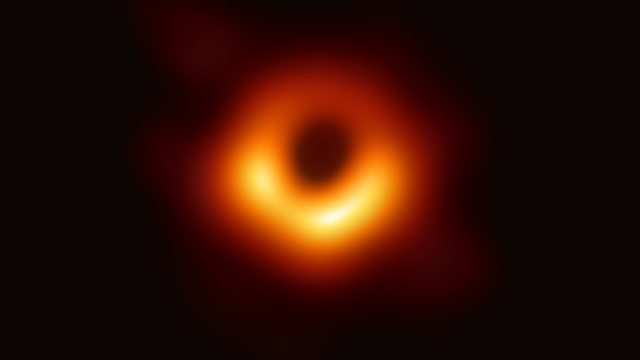The Sky at Night episode reveals how the first picture of a supermassive black hole was captured. When the photograph of the hole at the heart of the M87 galaxy was released in April, it captured the world’s imagination and made headlines everywhere.
Chris Lintott reports from behind the scenes, meeting the scientists from the Event Horizon Telescope who worked for a decade to capture the image. And Maggie Aderin-Pocock reveals the mysterious and terrifying power of this astonishing cosmic phenomenon.
The Sky at Night – Supermassive Black Hole
A supermassive black hole (SMBH or sometimes SBH) is the largest type of black hole, containing a mass of the order of hundreds of thousands, to billions of times, the mass of the Sun (M☉). Black holes are a class of astronomical object that have undergone gravitational collapse, leaving behind spheroidal regions of space from which nothing can escape, not even light. Observational evidence indicates that nearly all large galaxies contain a supermassive black hole, located at the galaxy’s center. In the case of the Milky Way, the supermassive black hole corresponds to the location of Sagittarius A* at the Galactic Core. Accretion of interstellar gas onto supermassive black holes is the process responsible for powering quasars and other types of active galactic nuclei.
Supermassive black holes have properties that distinguish them from lower-mass classifications. First, the average density of a SMBH (defined as the mass of the black hole divided by the volume within its Schwarzschild radius) can be less than the density of water in the case of some SMBHs. This is because the Schwarzschild radius is directly proportional to its mass.
Since the volume of a spherical object (such as the event horizon of a non-rotating black hole) is directly proportional to the cube of the radius, the density of a black hole is inversely proportional to the square of the mass, and thus higher mass black holes have lower average density. In addition, the tidal forces in the vicinity of the event horizon are significantly weaker for supermassive black holes.




